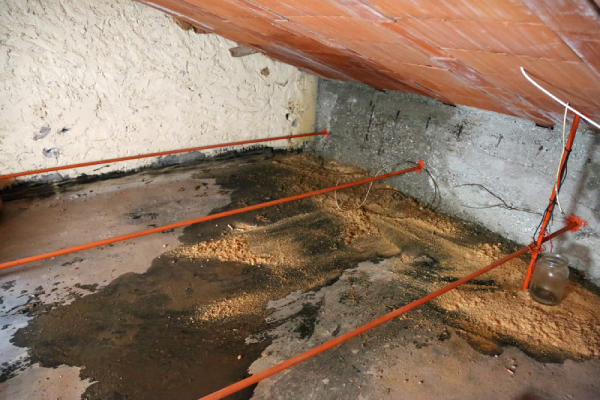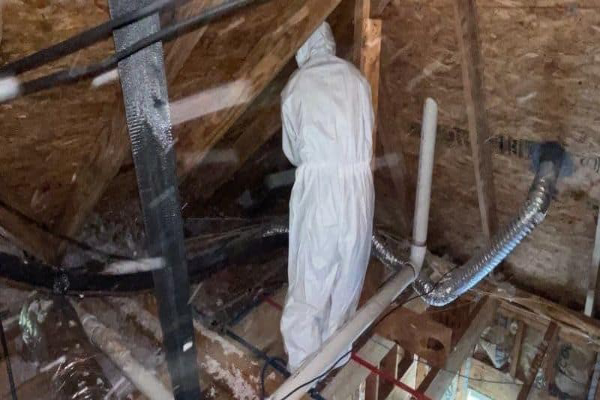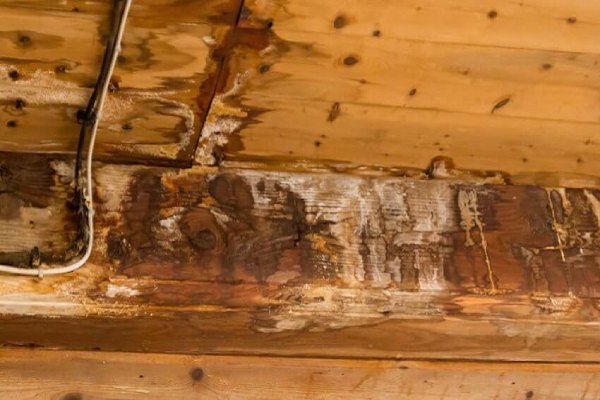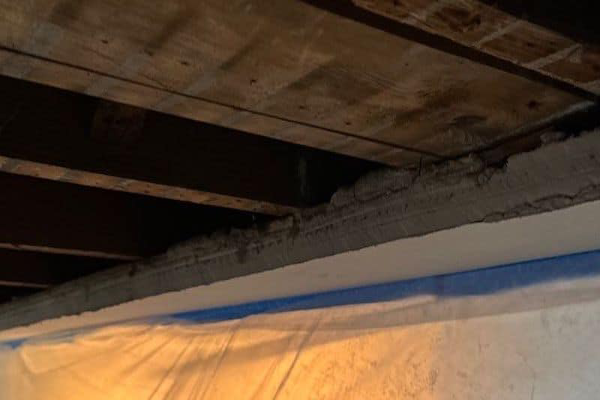Water damage in attic is hidden but a serious condition that may not be noticed until significant harm happens. However, residents want to focus on externally visible trouble areas like basements or leaks, the attic itself goes unnoticed. Unfortunately, harm that begins in this area can build up to compromise your roof, ceilings, insulation, and even indoor air quality. It finally leads to costly repairs and health risks. Whether you live in West Vancouver or North Vancouver, understanding the particular causes and signs of water damage in attic is very important. This article explores what leads to attic water issues, how to catch warning signs early, and most importantly how to treat and prevent injury before things go out of control.

What Causes Water Damage in the Attic?
Water damage in attic may result from many sources. Environmental conditions, structural flaws, and domestic systems all contribute to water intrusion. Let’s have a closer look at the primary sources:
1. Roof Leaks: The Most Frequent Perpetrator
One of the important causes of water in the attic is a compromised roof. This may include:
- Missing or damaged shingles
- Rusted or cracked flashing
- Worn-out underlayment
In regions such as North Vancouver, where there is a lot of rain, even a small gap in your roofing system can result in significant water intrusion. Snow buildup and unexpected melts can also contribute to this problem, and melted water seeps into concealed parts of your attic.
2. Condensation: The Hidden Moisture Trap
Even if your roof is still in good condition, insufficient ventilation can cause moisture buildup from the inside and water damage in attic. When indoor warm air rises and encounters the cold surfaces in the attic, it reduces and creates droplets on rafters, insulation, and even stored goods. This is particularly troublesome during West Vancouver’s cold and wet winters. Over time, this moisture can lead to mold growth, wood rot, and structural damage.
3. Plumbing or HVAC Leaks
Some homes have plumbing lines, ducts, or even water heaters in the attic area. If any of these systems produce a slow leak, the attic can quietly fill with water over the long term. Leaks in the air conditioning condensate lines are also common offenders, particularly on hot summer days when cooling systems are running nonstop.
4. Ice Dams: A Seasonal Menace
During winter, ice dams may form along the roof edge since snow melts and refreezes. This will trap water behind the ice and allow it to seep beneath shingles and into the attic. Ice dams form mainly in poorly insulated or unventilated houses where heat escapes via the attic and results in premature snow melting.
5. Inadequate or Lack of Insulation
Poor insulation allows warm air from your living space to flow into the attic, warming it up and causing humidity levels to rise. This is the ideal condition for condensation and resultant water damage. Also, with poor insulation, your home becomes less energy efficient, which means higher utility bills.
Signs of Water Damage in the Attic
Water damage in attic detected early may be the distinction between a quick repair and an expensive restoration. Some of the warning signs that something is not right in your attic are:
- Stains or Discoloration
Brown, yellow, or rust discoloration on the ceiling, rafters, or insulation is are common indication of water intrusion. If such discoloration is found near vent pipes, chimneys, or along the roofline, there is a strong possibility of water intrusion from above.
- Chronic Musty Odors
A musty smell in your attic or upstairs bedrooms typically means mold or mildew growth, which thrives in damp and dark environments. Even if you don’t see the mold, the smell alone should prompt an investigation.
- Warped Wood and Sagging Structures
Wood beams or support columns that look warped, bowed, or mushy to the touch could be waterlogged. Not only does this weaken your building’s structure, but it also has a chance to collapse under harsh conditions.
- Visible Mold Growth
Mold may be black, white, green, or gray spots on wood, insulation, or even cardboard boxes in the attic. Any mold that can be seen is a warning sign and must be treated right away.
- Blistered Paint or Bubbled Wallpaper
Water buildup in the attic may flow down through walls and cause blistered paint or bubbled wallpaper in upstairs rooms. These are surface problems that usually show underlying issues above the ceiling.
How to Treat Attic Water Damage
Acting quickly and intelligently for attic water damage repair can maintain the damage within bounds and limit future problems. These are the treatment steps for water damage in the attic:
1. Locate and Seal the Leak
Start by finding where the moisture came from. It might be:
- Visible roof leakage
- Condensation due to an absence of attic ventilation
- A broken pipe or heating system
Fix the cause of the problem immediately to prevent further damage.
2. Remove the Destroyed Items
You should take out any materials that were saturated, such as fiberglass insulation, drywall, or wood panels. If those materials are not dried, they will become habitats for mold and pests.
3. Dry the Attic Completely
Use a combination of fans, dehumidifiers, and open windows or vents (if weather permits). Using these professional devices can draw hidden moisture from the air and absorptive materials for attic water damage repair.
4. Look for Mold and Mildew
Even when you don’t see mold right in front of you, it can still be in areas such as hidden spaces behind drywall or insulation. If you even suspect the presence of growth, we highly recommend that you contact a mold remediation specialist to evaluate and address the condition safely.
5. Restore and Rebuild
Once everything is dry and mold-free, go ahead and do attic water damage repair:
- Replace insulation
- Fix or replace drywall
- paint surfaces
- Seal gaps and cracks
You could also consider adding a better ventilation system to your attic to prevent future moisture issues.
Why Professional Water Damage Restoration Is Worth It
Although some small water damage issues can be handled yourself, having restoration professionals has many benefits, particularly if there is extensive water damage in attic. Here are some reasons to hire them:
- Experience and Knowledge
Experts can find hidden damage that you might not even see, such as moisture between walls, under floors, or in insulation.
- Industrial-Grade Equipment
Restoration services use professional equipment like:
- Moisture meters
- Thermal imaging cameras
- Powerful dehumidifiers
These machines ensure a thorough and efficient drying process.
- Mold Remediation Expertise
Trained professionals can safely decrease and remove mold, clean the contaminated areas with antimicrobial products, and prevent its recurrence, which is a must for families with allergies or respiratory issues.
- Insurance Claim Assistance
Filing an insurance claim can be overwhelming. Many restoration companies assist homeowners by providing thorough damage reports, photographic documentation, and support through the claims process.
Water Damage Restoration in North Vancouver & West Vancouver
Residential homeowners in North and West Vancouver have some distinctive weather-related issues that cause water damage in attic:
- High Annual Rainfall
Multiple rainfalls throughout the year translate to continual exposure to water. You should check the roofs in these regions and service them regularly to bear the persistent rain.
- High Humidity Levels
Humidity can be chronic even during colder periods. Without attic ventilation and dehumidification, this provides the ideal environment for mold growth.
- Coastal Conditions
Pacific Ocean sea salt-laden air accelerates corrosion in roofing materials and contributes to faster deterioration of flashing, nails, and sealants. The condition calls for climate-specialized materials and maintenance frequencies to remove water damage in the attic.
- Regional Roofing Styles
Most houses in these regions feature sloped, ornate roof styles or historic-style architecture, which may include hidden valleys or chimneys. They are perfect spots for water intrusion.
That is why there is a need for water damage restoration services in North and West Vancouver.
Conclusion
Water damage in attic is not just cosmetic; it’s a safety hazard, comfort destroyer, and money waster. From minor condensation to major roof leaks, water can quietly eat away at your home’s foundation and provide a fertile ground for mold and rot. So, watchful eyes, careful checks, and good ventilation are your first lines of defense.
Revive Restoration: Bringing Your Property Back to Life
Revive Restoration is your trusted partner when disaster strikes, whether it’s water damage, fire, mold, or storm-related issues. With a commitment to fast response times, expert craftsmanship, and compassionate service, Revive Restoration helps homeowners and businesses recover quickly and effectively. Call us today to consult and reserve our services.





